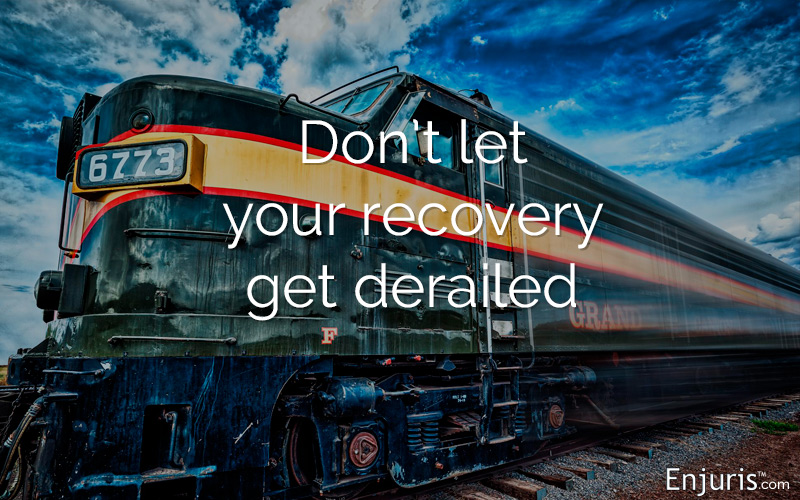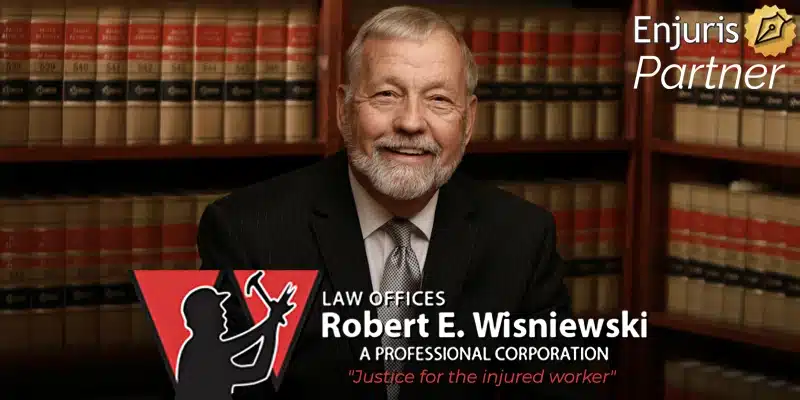
Learn about train accidents and personal injury lawsuits involving railroad companies
In Arizona, nearly 2,000 miles of railroad track wind through flat deserts and high mountains, carrying everything from main line railroads (like BNSF) to light rail systems and tourist lines.
Train accidents are rare compared to car accidents. According to the Federal Railroad Administration (FRA), there were 1,666 train accidents in 2018. But railroad accidents are far more deadly than car accidents. Of the 1,666 train accidents in 2018, 805 people were killed.
Common causes of train accidents include:
- Derailments
- Mechanical failures
- Human error
- Distracted pedestrians
- Suicides
- Railway bridge or platform collapses
Who can be held responsible for a train accident?
Railroad companies and their employees owe passengers and bystanders a duty to use reasonable care to avoid causing injury to them or their property.
If this duty is breached and an accident occurs, the injured party can sue for negligence. Depending on the nature of the accident, one or more of the following parties may be responsible:
- The railroad company
- The train operator
- The manufacturer of the train or train components (if the accident was caused by a defective train or train component)
- A government entity that owns or operates the railroad
If more than one party is liable, damages may be divided among the various parties in an amount determined by the judge or jury.
Keep in mind that while the employee of a railroad company may have caused the accident, the railroad company may ultimately be held liable under the doctrine of respondeat superior, so long as:
- The employee was acting within the scope of their employment at the time of the negligent act, and
- The employee’s act wasn’t criminal or intentional.
The doctrine of respondeat superior gives the injured person a better chance at recovering all their damages because the railroad company has liability insurance and generally has more money than the employee.
What damages are recoverable?
Railroad accidents are no different than car accidents in terms of what damages can be recovered. In Arizona, a person injured in a train accident can recover the following:
- Past and future medical costs
- Lost wages
- Property damage
- Pain and suffering (physical and mental)
- Loss of consortium
- Wrongful death
Claims for injured railroad workers
The Federal Employers Liability Act (FELA) provides a system of legal recovery for railroad employees and their families when a railroad employee is injured on the job. FELA replaces workers’ compensation for railroad employees. In other words, a railroad employee can’t file a workers’ compensation claim (like most employees), but instead has to file a claim under FELA.
There are some significant differences between FELA claims and workers’ compensation claims. The biggest difference is that FELA is a fault-based system. This means that a railroad employee seeking to recover damages under FELA must prove that the employer was negligent in order to recover damages.
The second major difference is that the amount of damages a railroad employee can recover are higher under FELA. While workers’ compensation is typically capped at a certain amount, there are no damage limits under FELA. Further, FELA awards damages for pain and suffering, whereas other Arizona employees can’t recover damages for pain and suffering under the state’s workers’ compensation statutes.
FELA also requires railroad companies to meet certain standards. The failure to meet these standards provides a basis for recovery. Some of these standards include:
- Providing a safe workplace
- Exercising a reasonable level of care for employee safety
- Providing employees with safe equipment, tools, and safety devices
- Choosing appropriately safe methods to carry out work
- Providing the proper level of help to ensure that work is carried out
- Inspecting the workplace for hazards that would inhibit safety
- Creating and enforcing rules and best practices for safety
Safety tips on preventing train accidents in Arizona
Many of Arizona’s train accidents occur at railroad crossings. A recent report released by the FRA found that Arizona is the only state in the country to have more than one railroad crossing listed in the FRA’s Top 13 Most Dangerous Railroad Crossings.
The top 13 list was created after compiling a decade’s worth of accident statistics from across the United States. The 5 Arizona railroad crossings that made the list are:
- West Thomas Road, east of North 27th Avenue in Phoenix
- North 35th Avenue, south of U.S. 60 and West Indian School Road in Phoenix
- North 43rd Avenue, south of U.S. 60 in Glendale
- North 27th Avenue, north of West Thomas Road in Phoenix
- The 5100 block of West Bethany Home Road in Glendale
The types of accidents that occur on these crossings range from vehicles running into moving trains to pedestrians being struck while crossing the tracks. With this in mind, Operation Lifesaver, a non-profit organization for railway safety, offers the following railroad safety tips:
- A visible train is closer and traveling faster than you think. Never try to outrace the train by speeding through the crossing.
- Trains can’t stop quickly. Even if the engineer spots you, it may take over a mile’s worth of travel before the train comes to a stop.
- Never drive or ride your motorcycle around lowered gates. If you believe the signal is broken or malfunctioning, call the emergency number posted on or near the crossing signal.
- Only attempt to cross train tracks if you think you can make the crossing without stopping on the tracks. Remember, a train is wider than the tracks by about 3 feet in both directions.
- If your vehicle stalls on the tracks, exit your car and get as far away from the tracks as you can. If there is no oncoming train, look for the Emergency Notification System sign and call the contact number to tell them to be on the lookout for your vehicle.
- At a multiple track crossing, don’t assume only one train is coming. After the first one passes, look and listen for a second or third locomotive.
Hiring a railroad accident attorney
Railroad accident litigation is complex and not all attorneys know the ins and outs. Browse our list of personal injury attorneys in Arizona and be sure to ask any attorney you’re considering hiring whether they have experience with train accidents.
See our guide Choosing a personal injury attorney.

